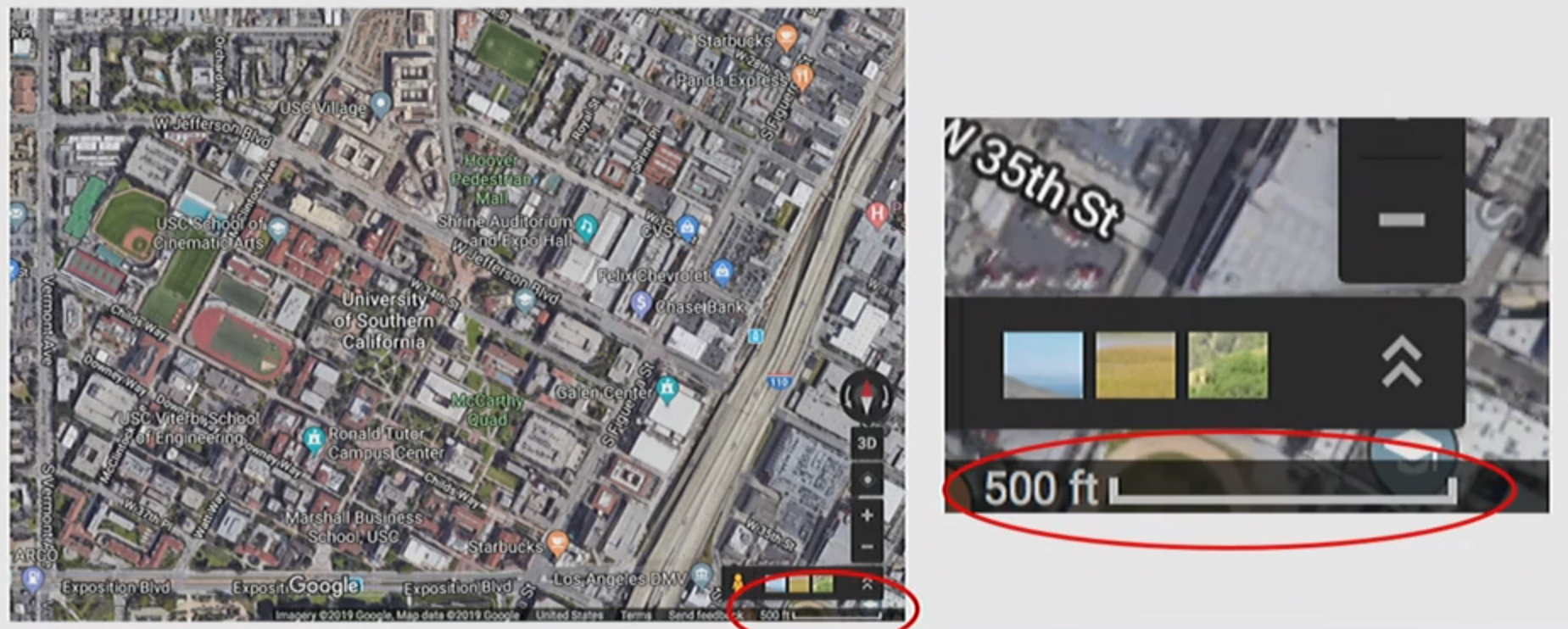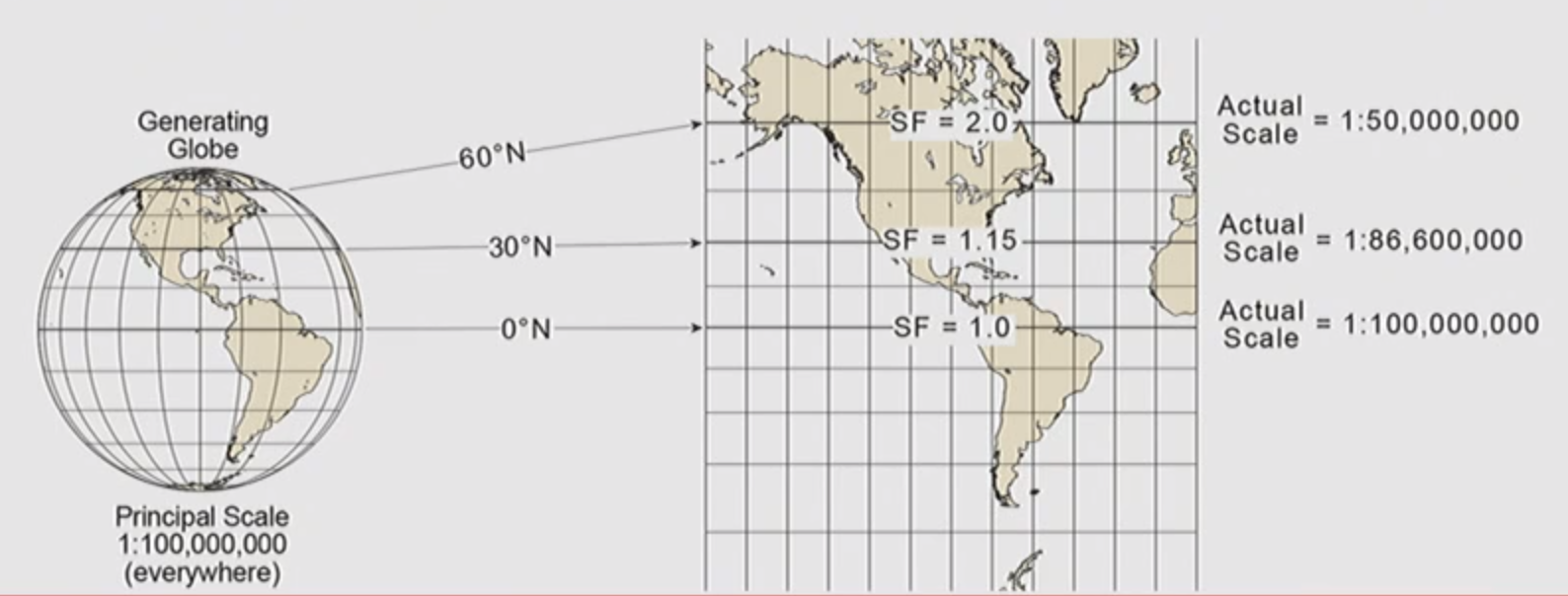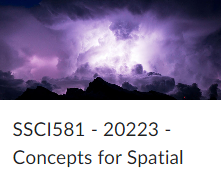SSCI-581-Week3
Scale
The Concept of Scale
- Scale is the size or extent of something
- The temporal scale is the length of time
- The spatial scale si the physical size or extent

Spatial Scale
1. Cartographic Scale
- The ratio of the distance on the map to the distance in the physical world
- Three types of Cartographic Scale:
- WordS describe UNITS of distance on map compare to UNIT of distance in physical world
- Rarely used outside printed paper maps

- Scale bar visually equates a map distance (No UNITS) to a distance in the physical world (WITH UNITS)
- Still works if you enlarge a static map (a paper map or an image of a map)

- Ratio of map distance (NO UNITS) to physical distance (NO UNITS)

In cartographic scale:
- Small scale is ZOOMED OUT; large,global, or extensive
- Large scale is ZOOMED IN; detailed and localized
2. True Cartographic Scale
- True cartographic scale means that scale on the generating ellipsoid and the developable surface are equal
- True cartographic scale is only found on the standard line(s) - the line(s) of contact with the developable surface OR emanating out from the point of contact
- True cartographic scale is what is shown on a map (either through verbal scale, scale bar, or representative fraction). This is called the Principal Scale
3. Principal Scale vs. Actual Scale
- Due to the distortion from the distance from the 3D to 2D projection process, the ratio of between distances on the ellipsoid and map become skewed away from the point/line(s) of contact:

Look at this example: At the Equator, the principle scale is equal to actual scale. But with the increment of altitude, the scale becomes large due to ellipsoid.
4. Scale Factor
- The Scale Factor is the ratio of scale on the map (Actual scale) to scale on the ellipsoid (Principle Scale)
4. Scale In traditional Studies
- Traditionally, scale was the backdrop or setting of geographic studies, but not analyzed as a factor in social spatial relationships or as an object of study in its own right
- Traditionally recognized scales:
- Global
- National
- Regional
- Local
5. Modern Conception of Scale
- Scales are not fixed but are socially contingent
- The structure of scales is political and subject to change: the “politics of scale”
- Key players in scalar politics: state, capital, other groups
- The scale just above may not be the best way to effect change: “jumping scale”
- Scalar configurations have material consequences
6. Scale of Analysis
- The spatial unit of analysis, such as county, city council district, census tract, census block, neighborhood, or other governmental districts; or grid size
7. Scale of Analysis vs. Study Area
- The study area is the extent/boundary of your study; the analysis scale is the units into which that area is broken up for the purposes of your study
All articles in this blog are licensed under CC BY-NC-SA 4.0 unless stating additionally.
Comment


